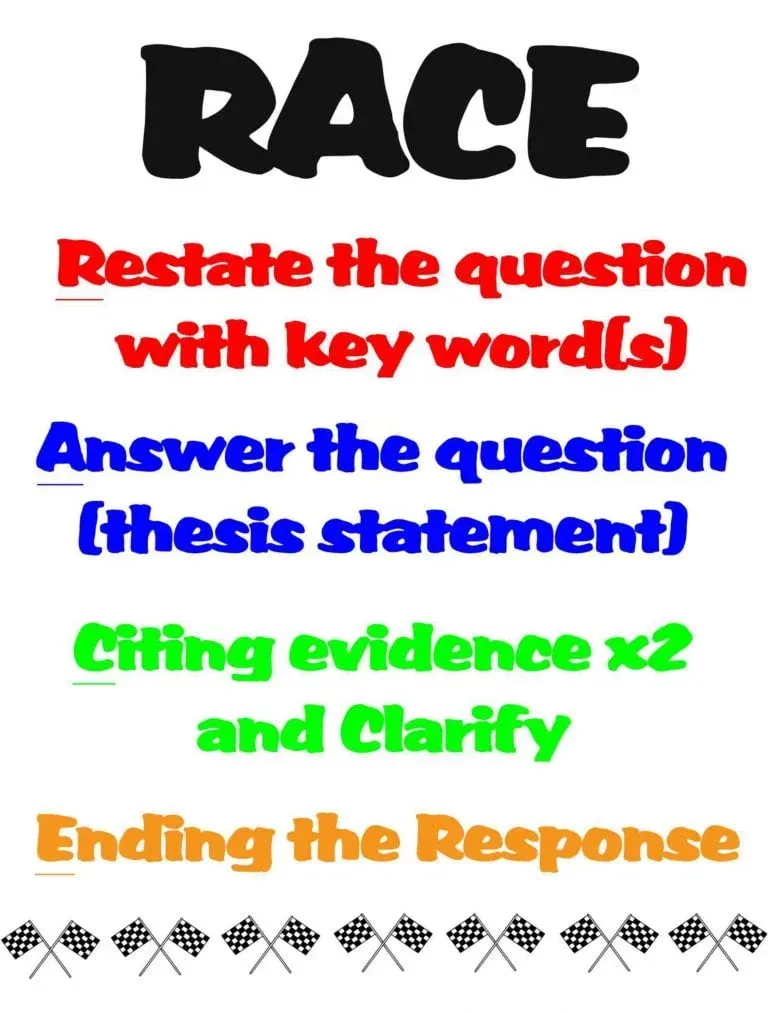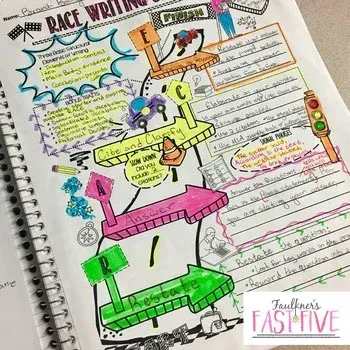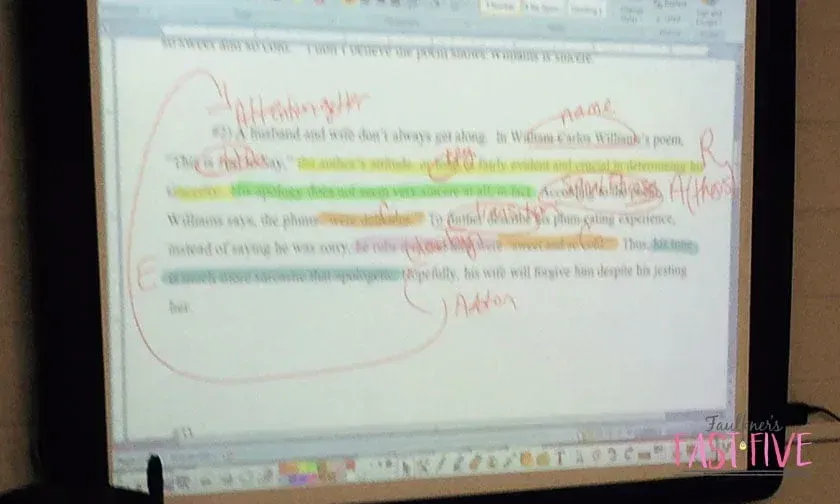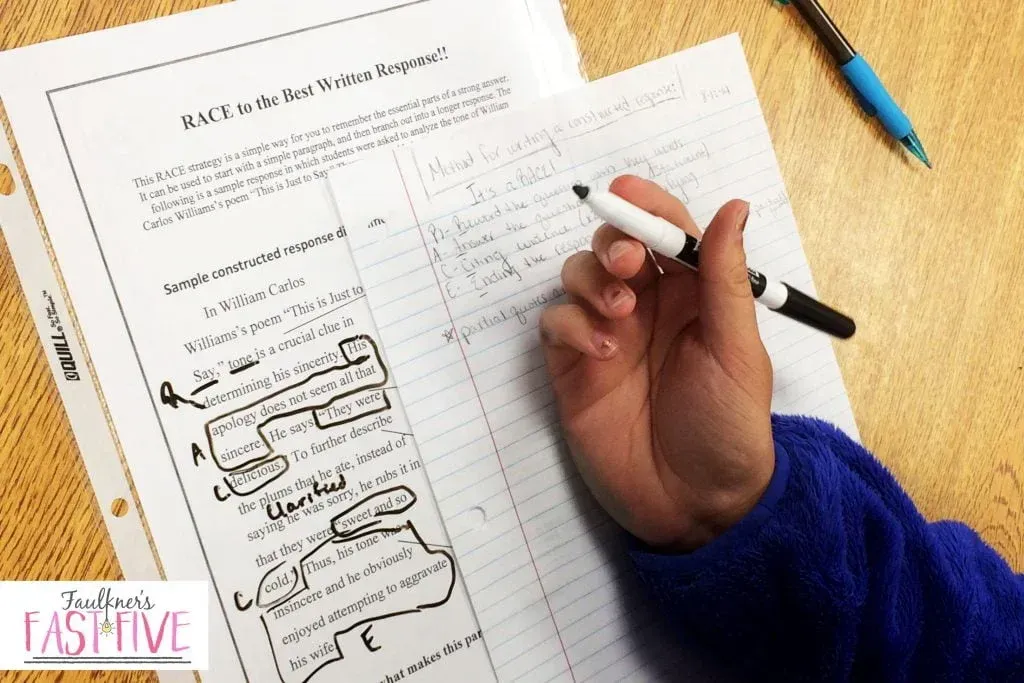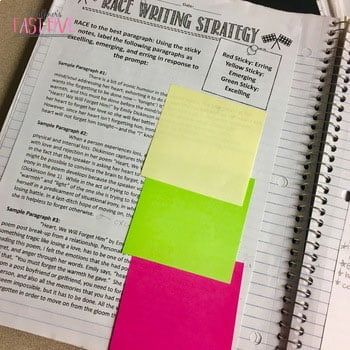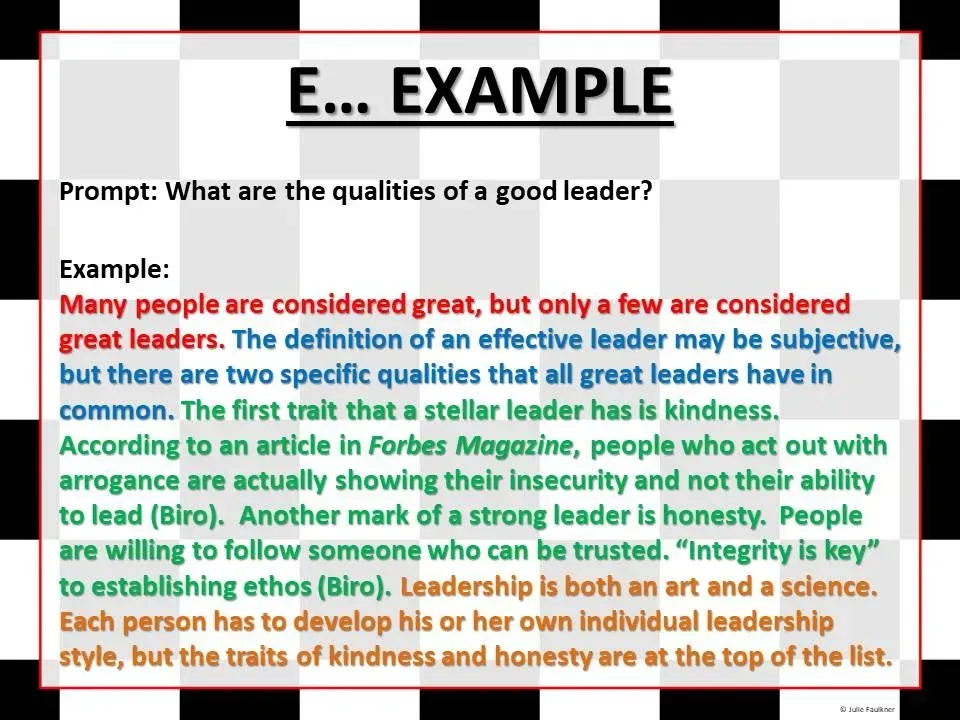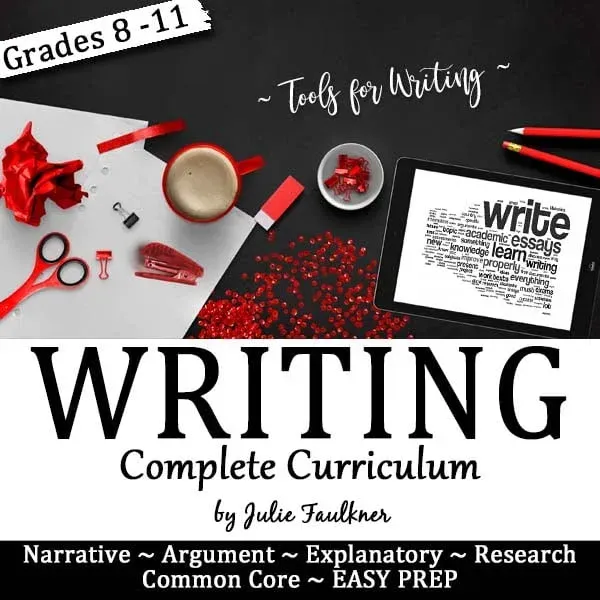A Formula for Successful Writing
Instructions Series: #3 The Race Paragraph
The next stop on my formula for successful writing instruction is the easy-peasy RACE formula. (You can see Part 1 here and Part 2 here.) Stay with me now… you’ve probably seen the RACE strategy done before. You may even have something similar to it. Whatever works for you and your students is awesome. I, however, go about it a tad differently because when I am teaching basic paragraph writing, I do like to give something for students to use from start to finish. Plus, this method reminds them of the key ingredients AND can easily be branched into a full essay because it functions like a “mini” essay in and of itself. I like to start small so students can sink their teeth into something before they tackle a larger assignment. I even review and use the RACE strategy near the beginning of the semester with my junior honors English students. There’s nothing wrong with review, and I feel more comfortable knowing they have a solid foundation for structure. Here’s what my RACE writing strategy looks like:
Step 1: Teach the process
I almost never assume students know what I want and require. It just works out so much better when I tell AND show them my expectations. The same is true with writing – especially with writing. To teach the RACE formula, I go full out with a PPT slide show and cute sketch notes. It helps define the terms and gives students something to use as reference when they are on their own.
Step 2: Look at samples and annotate and discuss
This step goes back to making sure students understand expectations. Giving them an exemplar helps them know where they are going. I also show them errant and emerging paragraphs, too, so they can see the entire spectrum. Take a look at my video tutorial for my Red-Light Green-Light strategy for analyzing model student papers.
Step 3: Practice together and annotate and discuss
Choose a prompt from a text you’ve been reading in class, or if you are using my teaching pack, use the provided stimulus and prompt. Sometimes I’ll have students attempt the first sentence alone. Other times I’ll start it by modeling my thinking aloud. I’m always modeling aloud, come to think of it. (Or maybe that’s just talking to myself LOL)! Sometimes, I write the parts of the formula on slips of paper and randomly give them out to students, so they have to chime in when it’s their turn. It just depends on where my students are and where I need to meet them. Then we just spiral and go with the flow from there. It really does take a lot of patience and time to write a paragraph together in class. It also takes a lot of willingness to step back on my part and let students work through it. Many times, I am putting them on the spot, so they have to feel comfortable speaking out and making mistakes. I give them time and space to think. Then as we are working back through what we’ve written, I model revision, and we come to conclusions together about what worked and what didn’t. I take it one step further right then, too, and we brainstorm how to fix those mistakes and just improve what we’ve done.
Step 4: Write individually
With a fresh prompt and stimuli, it is important for students to take everything they’ve learned now and compose their own paragraph. Again, I give them time and space to think and write. It is important to note here that this method is designed to work for constructed responses with a text. Students see that modeled all the way through the lesson, so be sure to choose material for them that aligns with that process.
Step 5: Review and reflect and revise
Lastly, I always give my students feedback on what they’ve written. My RACE teaching pack comes with a rubric, but you could even just do a check list. Sometimes I do that, too. Again, it just depends on what my students need. Occasionally, we will take one of our previous RACE paragraphs and revise it. That is a critical part of the learning process as well.
If you are looking for an entire writing curriculum, take a look at my full writing curriculum that is flexible and complete enough for any ELA classroom!
Be sure to get this blog straight to your email, so you won’t miss the next post in this series: The Writer’s Notebook.
And. sign up for my monthly newsletter – “Teaching Tidbits” – that is delivered directly to your email inbox each month. Each month you’ll get announcements, tips for teaching, updates on new and revised resources, and, of course, an email-only exclusive FREEBIE!
(You Can Subscribe to Newsletters on the "Stay Connected" Tab!)
Love this content?
Sign up for my email newsletter with more tips, ideas, success stories, and freebies!










